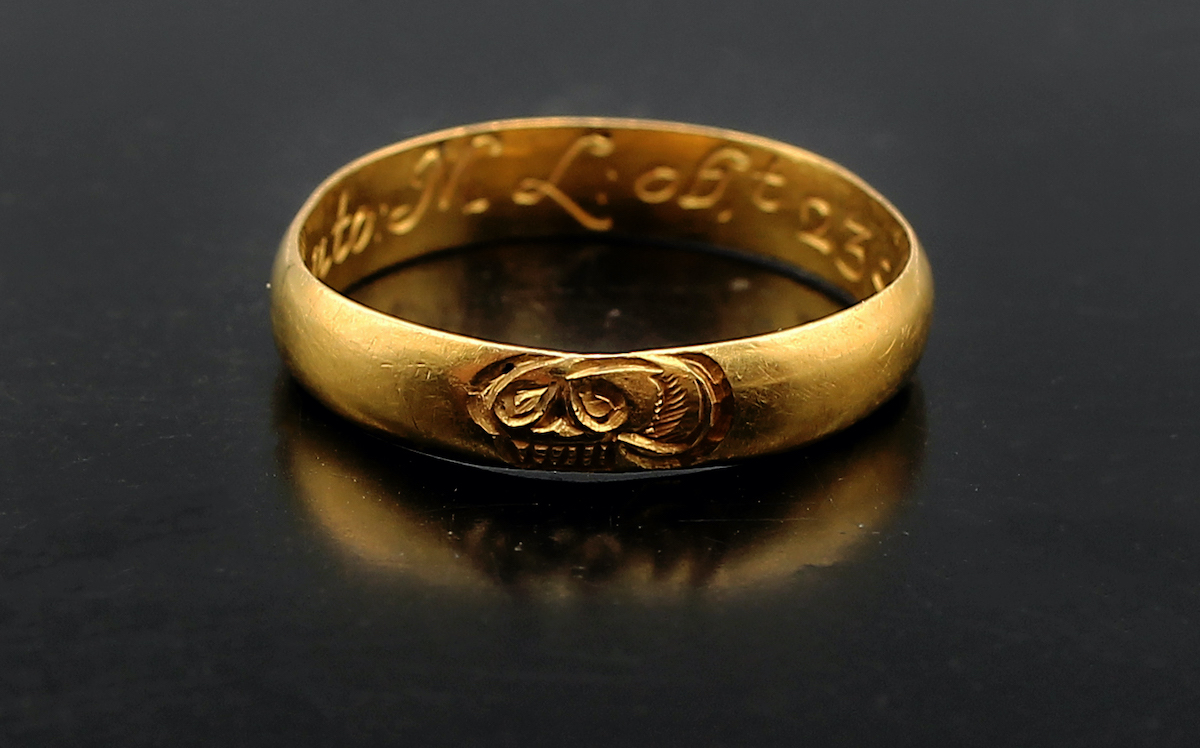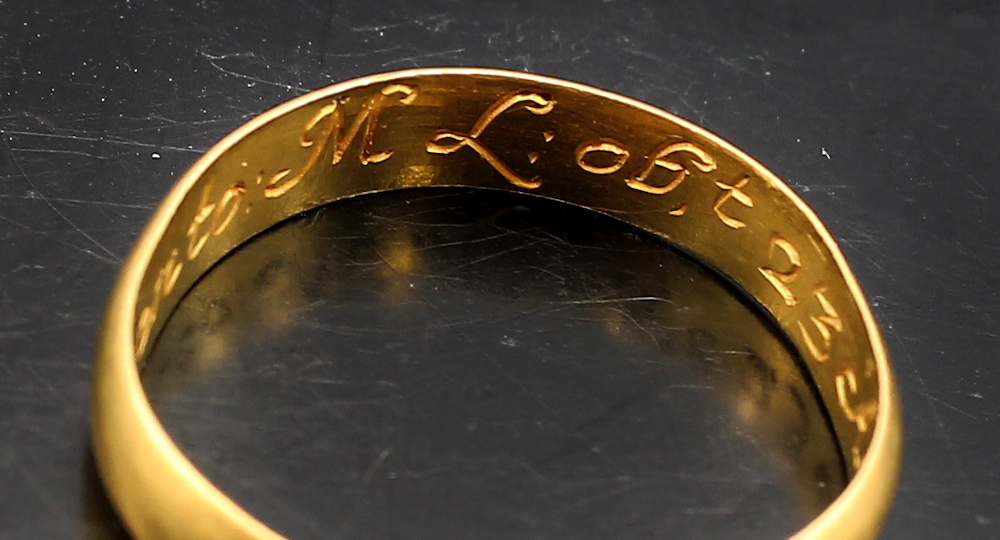Mourning ring unearthed in Dorset set for sale
The remarkable discovery of a 17th-century mourning ring in the Dorset countryside has captured the attention of historians and collectors alike.
Anthony Woolmington, an experienced metal detectorist, unearthed the ring while scanning the soft pasture land near Shillingstone. Initially, Anthony thought the ring was a more modern piece, but further inspection revealed its true historical significance. “I found the ring on what I think may have been an old pathway running across the pasture,” he said. “It was about eight inches down in soft ground, and at first, I thought it was quite modern, however, we quickly realised it was much older, probably from the 16th or 17th century.”

The ring, now confirmed to be a mourning ring from 1692, will be sold at Hansons Auctioneers’ February Coin and Historical Sale. Despite its modest weight of just 3.7 grams and its gold value of under £200, experts at Hansons predict the ring could fetch between £600 and £800 due to its historical rarity and striking design. With its intricate design, including a skull and the engraving of initials and a death date, this discovery is a testament to how metal detectorists like Anthony Woolmington continue to uncover pieces of history that might otherwise remain hidden.
Charles Hanson, auctioneer and owner of Hansons Auctioneers, explained the importance of bringing seemingly ordinary items into auction: “Even when jewellery seems to have minimal intrinsic value, it’s always worth bringing it to auction. You never know when an item has historical or emotional significance that could elevate its value far beyond its scrap metal worth.”

At first glance, the ring appeared to be an ordinary 18-carat gold wedding band. However, upon closer inspection, Hanson identified it as a mourning ring—a rare type of commemorative jewellery that became popular after the English Reformation, particularly during the 16th and 17th centuries. The ring features a distinctive ‘D’ shaped cross-section and an incised skull on its exterior, which faces to the left. This detailed design includes eyes represented by two circular recesses, a raised central oval to form a nose, and two sets of teeth indicated by five vertical lines.
The inside of the band reveals a maker’s mark—a Gothic capital ‘B’—which pinpoints its creation to the year 1692. Further engraving on the interior includes the initials “ML” and the date of death, “23rd April 1692,” giving a poignant personal connection to the ring.

Helen Smith, Head of Jewellery at Hansons Auctioneers, commented: “The discovery of such a ring is truly remarkable. Mourning rings were often crafted to commemorate significant losses, particularly during times of turmoil such as the English Civil War, the execution of Charles I, and the subsequent political upheaval. This ring is an extraordinary example of both craftsmanship and the deeply personal nature of jewellery in that era. The fact that this mourning ring has survived more than 350 years is a testament to its enduring significance.”
In the 17th century, England was beset by conflict and tragedy—civil war, the execution of a monarch, the plague of 1665, and the Great Fire of London in 1666. Mourning rings served as a poignant reminder of mortality and were often commissioned by families to mark the death of a loved one or commemorate significant events such as royal executions.
Hanson reflected: “If only this ring could talk, we could learn so much about the life it commemorates. It’s an incredible piece of history, and we are thrilled to be able to offer it to collectors and history enthusiasts.”


